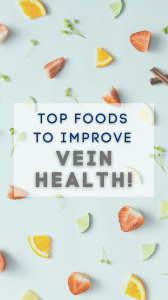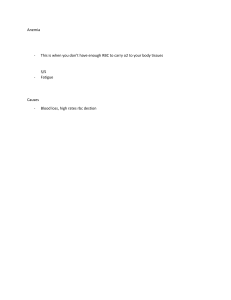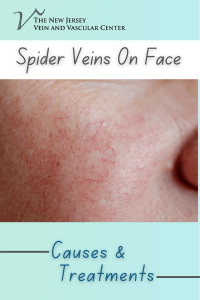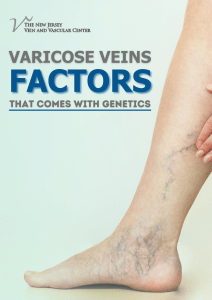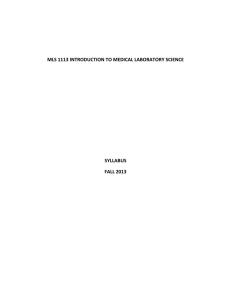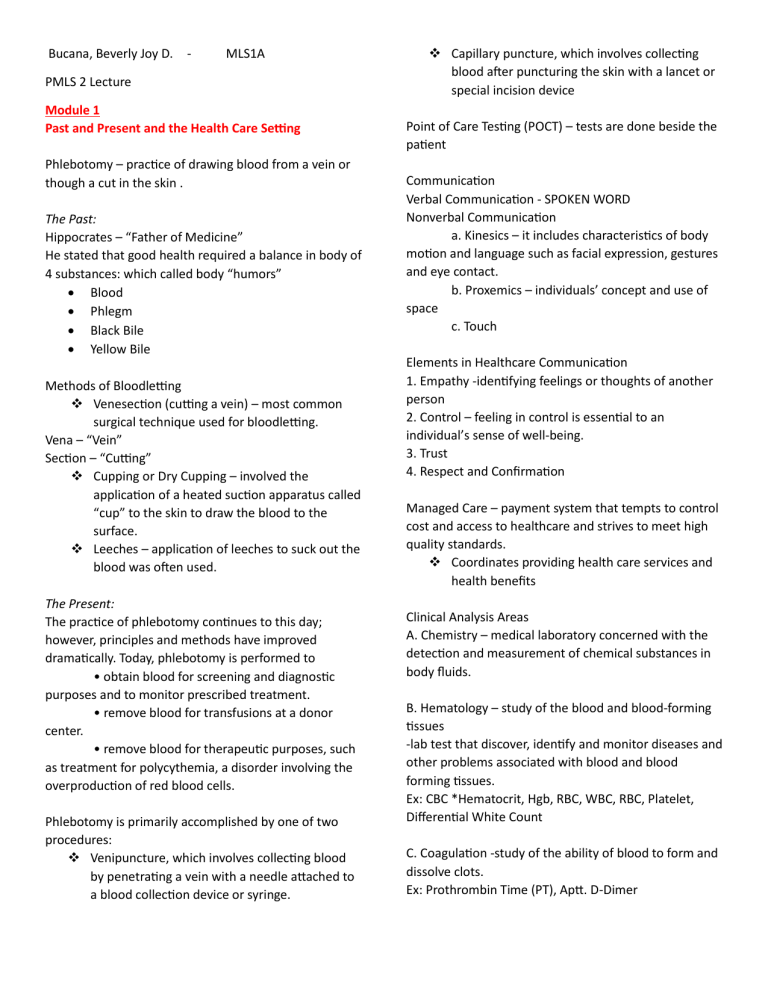
Bucana, Beverly Joy D. - MLS1A PMLS 2 Lecture Module 1 Past and Present and the Health Care Setting Phlebotomy – practice of drawing blood from a vein or though a cut in the skin . The Past: Hippocrates – “Father of Medicine” He stated that good health required a balance in body of 4 substances: which called body “humors” Blood Phlegm Black Bile Yellow Bile Methods of Bloodletting Venesection (cutting a vein) – most common surgical technique used for bloodletting. Vena – “Vein” Section – “Cutting” Cupping or Dry Cupping – involved the application of a heated suction apparatus called “cup” to the skin to draw the blood to the surface. Leeches – application of leeches to suck out the blood was often used. The Present: The practice of phlebotomy continues to this day; however, principles and methods have improved dramatically. Today, phlebotomy is performed to • obtain blood for screening and diagnostic purposes and to monitor prescribed treatment. • remove blood for transfusions at a donor center. • remove blood for therapeutic purposes, such as treatment for polycythemia, a disorder involving the overproduction of red blood cells. Phlebotomy is primarily accomplished by one of two procedures: Venipuncture, which involves collecting blood by penetrating a vein with a needle attached to a blood collection device or syringe. Capillary puncture, which involves collecting blood after puncturing the skin with a lancet or special incision device Point of Care Testing (POCT) – tests are done beside the patient Communication Verbal Communication - SPOKEN WORD Nonverbal Communication a. Kinesics – it includes characteristics of body motion and language such as facial expression, gestures and eye contact. b. Proxemics – individuals’ concept and use of space c. Touch Elements in Healthcare Communication 1. Empathy -identifying feelings or thoughts of another person 2. Control – feeling in control is essential to an individual’s sense of well-being. 3. Trust 4. Respect and Confirmation Managed Care – payment system that tempts to control cost and access to healthcare and strives to meet high quality standards. Coordinates providing health care services and health benefits Clinical Analysis Areas A. Chemistry – medical laboratory concerned with the detection and measurement of chemical substances in body fluids. B. Hematology – study of the blood and blood-forming tissues -lab test that discover, identify and monitor diseases and other problems associated with blood and blood forming tissues. Ex: CBC *Hematocrit, Hgb, RBC, WBC, RBC, Platelet, Differential White Count C. Coagulation -study of the ability of blood to form and dissolve clots. Ex: Prothrombin Time (PT), Aptt. D-Dimer D. Serology or Immunology Immunology – study of the immune system Serology – identify antibodies and antigens E. Urinalysis – analysis of urine F. Microbiology – department analyzes blood and other body fluids and tissues, by means of culture and sensitivity. G. Blood Bank or Immunohematology – dept of the lab prepares a blood products to be used H. Cytogenetic and Flow Cytometry Cytogenetics – samples are examine microscopically for chromosal deficiencies that relate to genetic disease. Flow Cytometry – used in clinical trails Anatomic and Surgical Pathology A. Histology – study of microscopic structure of tissues B. Cytology – concerned with the structure of tissue National Standard Organizations and Regulatory Agencies TJC- The Joint Commission CAP – College of American Pathologists SBH – State Board of Health CLSI – Clinical and Laboratory Standards Institute CLI – Clinical Laboratory Improvement OSHA – Occupational Safety and Health Administration NAACL – National Accreditations Agency for Clinical Laboratory
